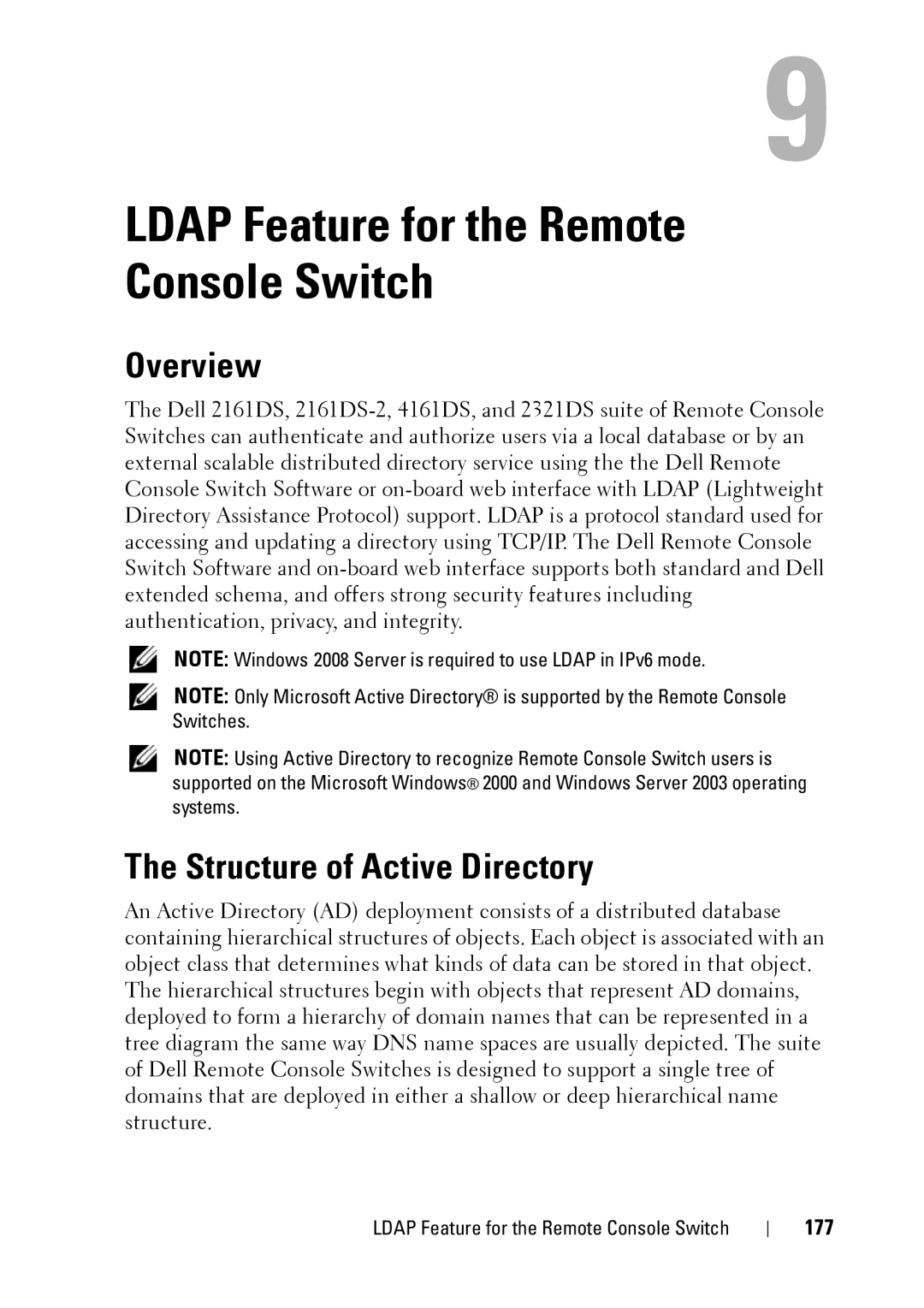
9
LDAP Feature for the Remote Console Switch
Overview
The Dell 2161DS,
NOTE: Windows 2008 Server is required to use LDAP in IPv6 mode.
NOTE: Only Microsoft Active Directory® is supported by the Remote Console Switches.
NOTE: Using Active Directory to recognize Remote Console Switch users is supported on the Microsoft Windows® 2000 and Windows Server 2003 operating systems.
The Structure of Active Directory
An Active Directory (AD) deployment consists of a distributed database containing hierarchical structures of objects. Each object is associated with an object class that determines what kinds of data can be stored in that object. The hierarchical structures begin with objects that represent AD domains, deployed to form a hierarchy of domain names that can be represented in a tree diagram the same way DNS name spaces are usually depicted. The suite of Dell Remote Console Switches is designed to support a single tree of domains that are deployed in either a shallow or deep hierarchical name structure.
LDAP Feature for the Remote Console Switch
